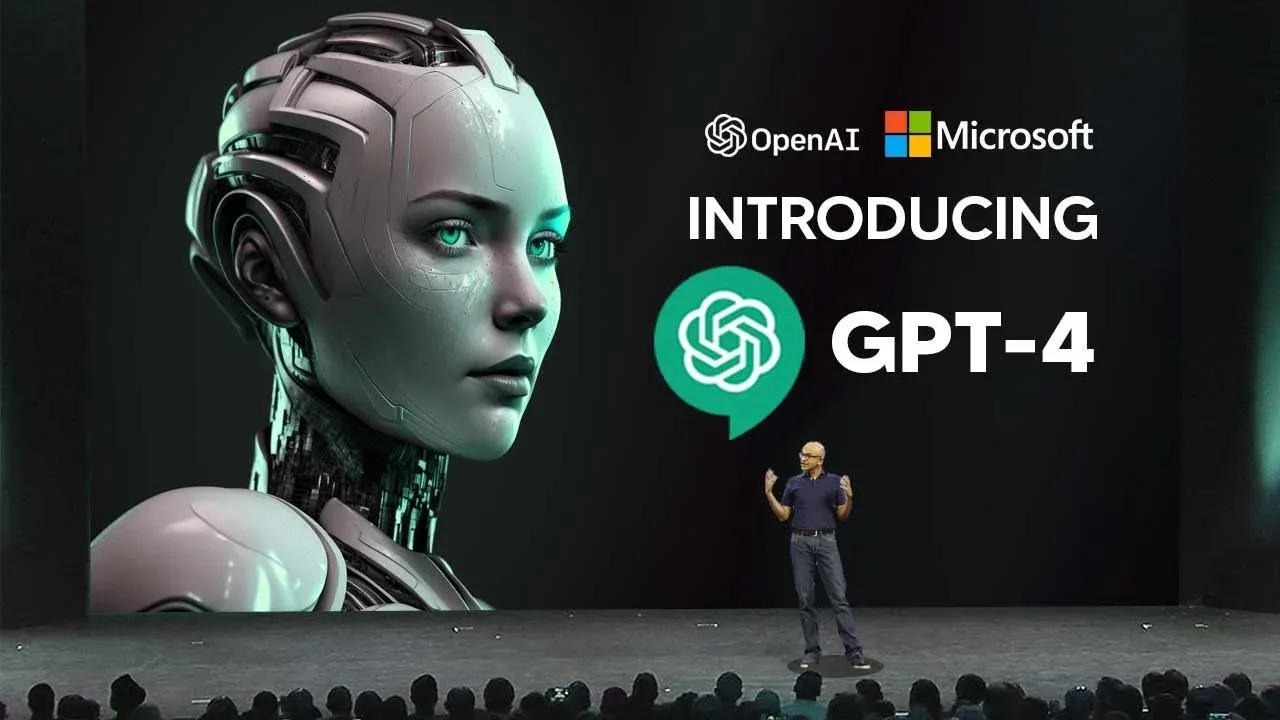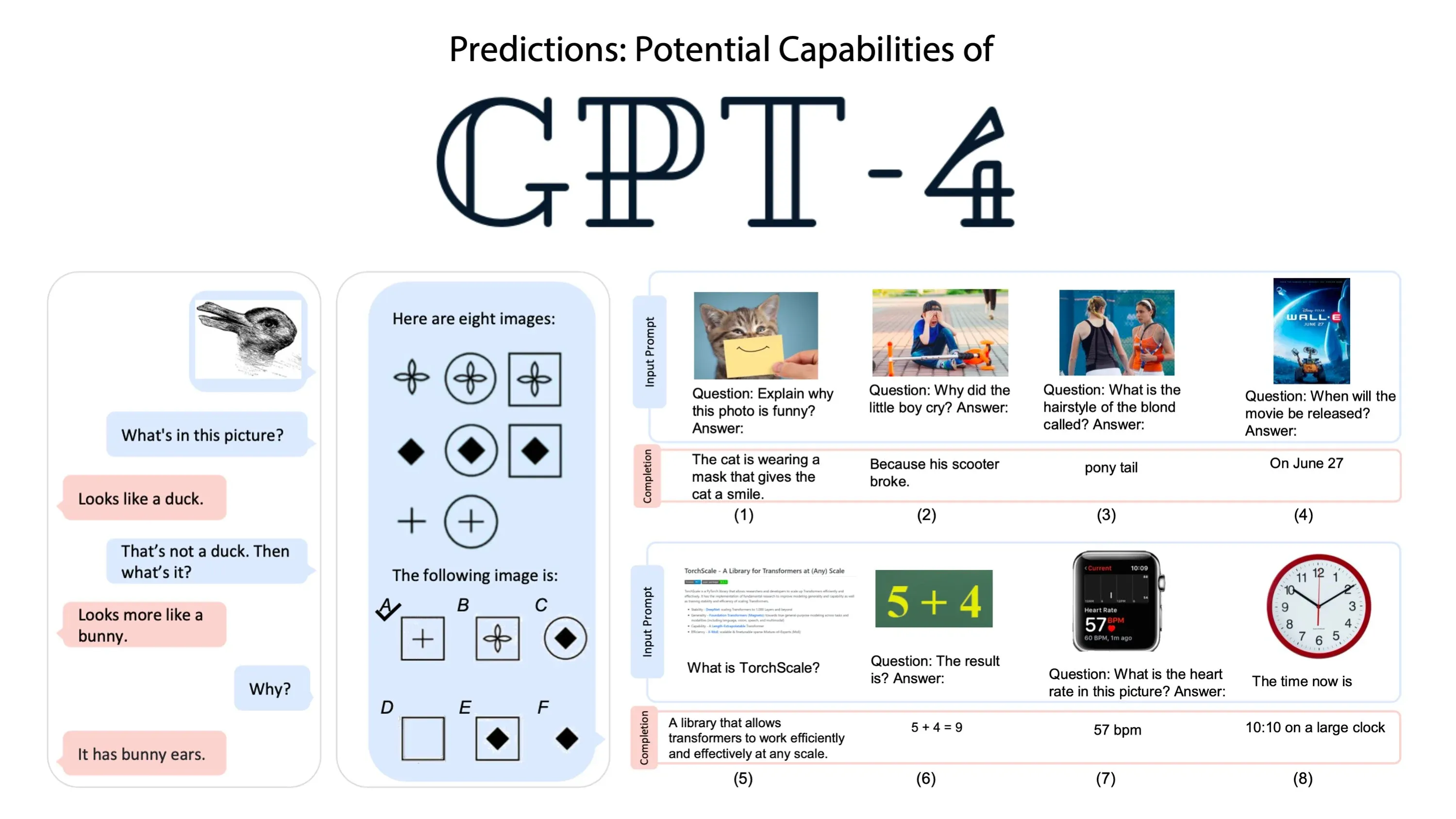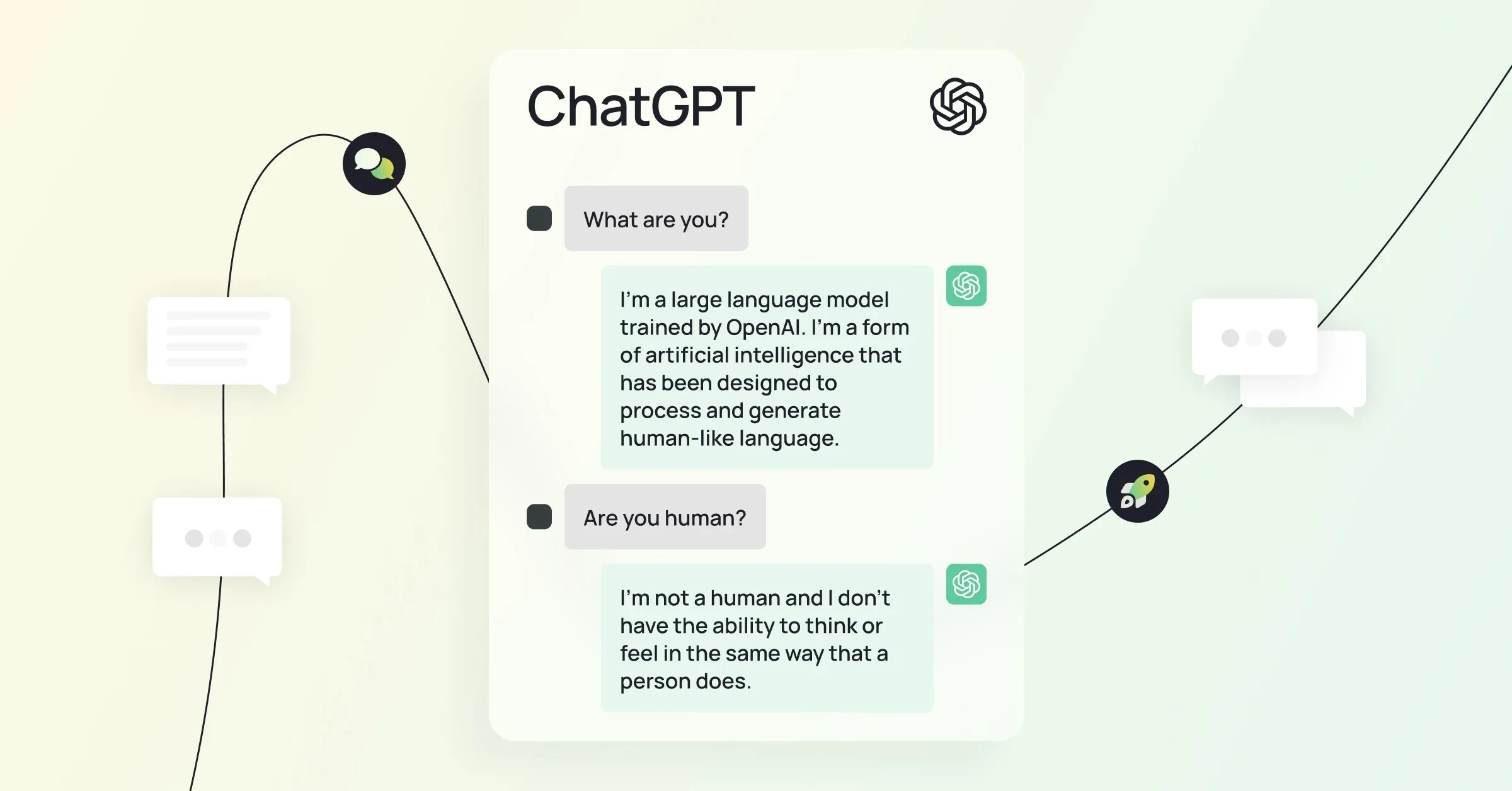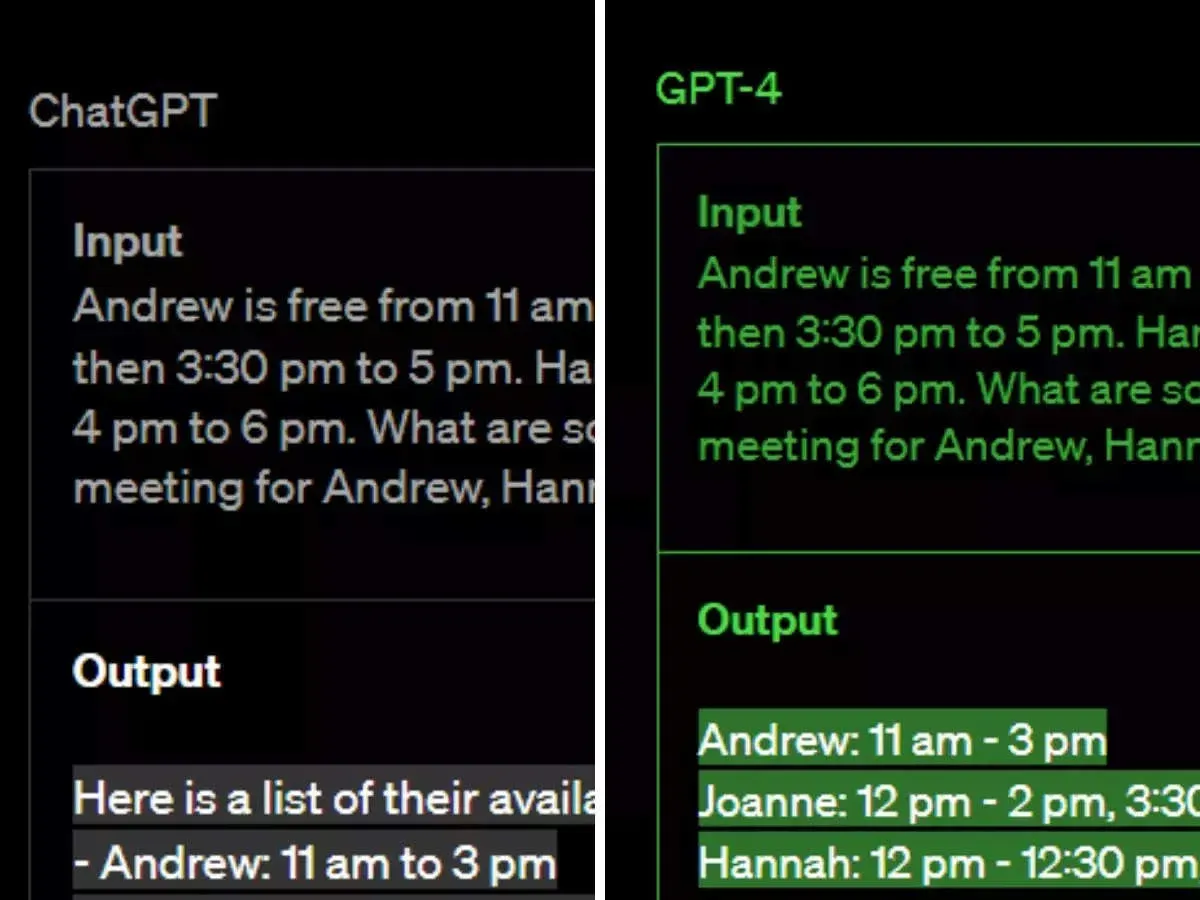Artificial intelligence and natural language processing are breakthroughs that have disrupted how we interact with technology.
Amidst various AI tools, OpenAI's GPT models and ChatGPT stand out, delivering unparalleled conversational experiences.
But as technology evolves and possibilities expand, a new potential model - GPT-4 - emerges on the horizon. With innovative strides promising superior capabilities, choosing the right AI tool might feel like a complex puzzle.
This guide unfolds that puzzle by comparing two significant choices: the speculative GPT-4 and ChatGPT.
We delve into the heart of their differences, analyze their strengths and weaknesses, and provide crucial insights to help you make an educated choice. Whether you're interested in understanding these formidable AIs or seeking the perfect choice for your specific needs, this guide will illuminate your path.
Embark on this journey with us as we delve into the fascinating realm of AI language models. It's time to unveil the capabilities of these incredible conversation partners.
Understanding GPT-4
To understand GPT-4, it's best to start with the basics. GPT stands for Generative Pre-training Transformer.

It's a language prediction model that OpenAI—the intelligence brainchild behind its creation—primarily designed for answering queries, translation, and generating human-like texts.
Basic Features of GPT-4
GPT-4, while still hypothetical as we write this guide, is expected to be an upgrade from its predecessor, GPT-3. If we judge by the advancements OpenAI made when upgrading from GPT-2 to GPT-3, we can imagine that GPT-4 would further enhance these features and capabilities.
What sets GPT-4 apart is its expected handle on text generation. We anticipate it to offer more nuanced performances, producing text that imitates human language more faithfully and captures the subtle context that other models miss. It could provide even more realistic simulation, mimicking a real person during a conversation.
In terms of applications, this hypothetical GPT-4 would likely cater to diverse uses, ranging from content creation, grammar correction, programming help, to even more complex tasks like contextual conversation making and decision-making.
From a user's perspective, GPT-4 should promise easier and more straightforward usability. With simpler prompts, it might let users navigate effortlessly and manipulate its language modelling power to optimal advantage.
Strengths and Weaknesses of GPT-4
GPT-4's strength likely lies in its capability to comprehend context, even in complex situations, and produce coherent, nuanced responses. This contextual understanding should be far superior to other language models, enhancing how GPT-4 processes prompts and replies.
However, potential weaknesses could arise from size and processing power requirements. As a much larger model than GPT-3, GPT-4 might be resource-demanding, potentially making it harder for everyday users to utilize this technology.

It's also worth considering whether GPT-4 could fall prey to the same pitfalls as its predecessor, GPT-3, such as generating overly verbose or irrelevant content if given vague or non-specific prompts.
Remember, while we eagerly anticipate GPT-4's arrival and its possible advancements, this understanding is mainly predictive, considering how OpenAI has been enhancing its models.
Understanding ChatGPT
ChatGPT, just like GPT-4, belongs to the language model family crafted by OpenAI. But it's not just a typical AI. This chatbot has been honed to offer smooth, conversational interactions that feel incredibly natural, almost like talking to a human.

Core Features of ChatGPT
At the heart of ChatGPT, there's a nuanced understanding of human language. It interprets prompts and delivers responses, wrapping a variety of applications under its wing. From drafting emails, writing code, answering questions, creating content, to casual conversation, ChatGPT's capabilities are vast.
But where it truly shines is the chat functionality. Imagine having a chat with a friend. That's how interacting with ChatGPT feels. It can carry a conversation, understand complex context, respond appropriately, and sometimes even add a dash of wit or humor. It's like having an intelligent conversational partner at your disposal.
Benefits and Limitations of ChatGPT
ChatGPT's primary benefit is it makes engaging with an AI feel more human. Its responses are more conversational, less robotic. This makes it an excellent tool for applications needing human-like interaction, be it customer support, entertainment, or personal assistance.
ChatGPT also understands context significantly well. Thus, it can keep up with conversation threads, respond to various prompts, and even handle diverse topics. This understanding translates into an enriching, sophisticated, and personalized interaction.
However, like all technologies, ChatGPT also has limitations. As it doesn't store personal data beyond the conversation at hand, it doesn't remember past conversations. This means you cannot reference old chats in your new conversation.
Moreover, despite its advanced conversation capabilities, some complex or ambiguous prompts might still trip it up, leading to responses that may feel surreal or nonsensical.
Lastly, while it's trained to refuse improper requests, specifics like political bias or controversial topics might cause it to generate unexpected or incorrect responses occasionally. Therefore, users must carefully consider these limitations when engaging with ChatGPT.
Comparing GPT-4 and ChatGPT
Understanding the intricacies of GPT-4 and ChatGPT is half the battle, but how do they stack up against each other?
This section delves into the heart of their comparison, examining their performance, adaptability, stability, and handling of sensitive topics.
Here's how it shakes out:
GPT-4 | ChatGPT | |
| Quality of Text Generation | The hypothetical GPT-4 should take this facet up a notch, offering even better text generation than its predecessor. Presumably, it could capture complex nuances better and generate more human-like text. | ChatGPT shines in this arena. Its generation of text is conversational and human-like, making it an intuitive and seamless chatbot. |
| Adaptability to Diverse Prompts | Given OpenAI's advancements, we can expect GPT-4 to handle a wide range of prompts with more effectual precision, tackling complex tasks even better than GPT-3. | This is where ChatGPT excels—it handles diverse prompts well. Whether it's drafting an email or chatting casually, it adapts swiftly. |
| Stability in Long Conversations | It's difficult to speculate how GPT-4 would handle long conversations. However, if it follows advancements of its predecessor, it might handle long dialogs better. | ChatGPT is designed primarily for conversations, so it handles long chats better than standard GPT models. However, it does require some contextual reminders for long threads. |
| Handling Sensitive Topics | The handling of sensitive topics is a challenge for AI. GPT-4 is expected to have better safety mitigation systems, but we can't ascertain this until it's available. | ChatGPT can refuse inappropriate or harmful generation. However, it’s not flawless and can sometimes miss borderline prompts or generate unexpected responses. |
Let's dive into these aspects further:
Quality of Text Generation: Text generation quality is one of the critical parameters distinguishing these two AI models. ChatGPT produces human-like text that's conversationally oriented, making it exceptional for use in chatbots and other conversational applications.
On the other hand, the upcoming GPT-4 should harness the learning from its predecessor and improve upon it, hence providing even better text generation.
Adaptability to Diverse Prompts: Both models display versatility in handling a range of prompts.
But their application areas differ—ChatGPT is more conversation-centric, while GPT-4 is expected to be well-rounded and more comprehensive, dealing effectively with tasks beyond just conversation.
Stability in Long Conversations: ChatGPT, being designed primarily for dialogues, should offer better stability in long conversations.
But we can expect GPT-4 to advance on this front, provided it takes lessons from issues found in GPT-3.
Handling Sensitive Topics: Every AI model tries to handle sensitive topics responsibly, but it's always a challenging task.
ChatGPT, for instance, tries to refuse prompts leading to unsafe or controversial content. GPT-4 is expected to enhance this safety mitigation even further, but we'll only know when it becomes available.
This comparison gives a detailed analysis of what both have to offer, helping you understand the strengths and weaknesses of the two, bearing in mind that GPT-4 is hypothetical as of now. Being aware of these facets is crucial when choosing the AI model that suits your needs best.
Choosing Between GPT-4 and ChatGPT
Deciding between GPT-4 and ChatGPT boils down to your specific needs and how each model's strengths and weaknesses align with those requirements. To make an informed decision, consider the following factors:

1. Focus on Text Generation or Conversational Abilities
If your primary concern is generating human-like text or working with diverse prompts and topics, GPT-4 should be a powerful contender. As an upgraded version of GPT-3, we expect it to produce better text generation, capture complex nuances, and handle a broader range of tasks.
On the other hand, if you're looking for an AI that excels in chat-based tasks and produces natural, seamless conversations, ChatGPT is your go-to model. It specializes in conversation, understanding context, and adapting to different topics.
2. Adaptability to Diverse Topics and Prompts
When it comes to handling various prompts in areas beyond casual conversation—such as translation, content creation, or grammar correction—GPT-4 is projected to be well-rounded. It should address a wide array of tasks and offer greater adaptability to diverse prompts.
While ChatGPT can deal with different topics, its main strength is in chatting and addressing conversation-driven tasks. If conversational adaptability is your priority, ChatGPT is an excellent choice.
3. Stability in Long Conversations
If you need an AI model designed primarily for extended dialogues, ChatGPT is the way to go. Although ChatGPT requires a certain level of context management for long chats, it generally delivers a more conversational and human-like experience.
It's difficult to predict how GPT-4 would manage long conversations, but we can expect improvements given OpenAI’s advancements on previous models.
4. Managing Sensitive Topics and Safety
Handling sensitive topics and maintaining safe content generation is vital for any AI model. While ChatGPT is programmed to refuse inappropriate or harmful prompts, it does face occasional hiccups.
As GPT-4 is hypothetical, it's hard to know its exact capabilities in managing sensitive topics. However, if it incorporates lessons learned from GPT-3, we can expect enhanced safety features.
In Conclusion
Think about your specific needs and priorities before choosing between GPT-4 and ChatGPT. If conversation-based applications and natural interfaces are what you're after, ChatGPT is your best bet.
On the other hand, if you're seeking better text generation, improved adaptability to diverse prompts, and a more comprehensive range of tasks, GPT-4 should be the model to look forward to, considering its hypothetical capabilities.
Remain aware of potential limitations for each model, such as handling long conversations or dealing with sensitive subjects. Understanding these nuances helps you make an educated decision and pick the AI that is best suited to your objectives.
Frequently Asked Questions (FAQs)
What other capabilities could a potential GPT-4 model bring?
It's hard to precisely predict. But GPT-4 might introduce advanced multi-modal abilities, improved logical reasoning, or enhanced learning from fewer samples.
Can ChatGPT understand different languages?
Yes, ChatGPT can handle several languages, but its proficiency varies, with English being its strongest.
Would GPT-4 replace human writers and editors?
Unlikely. While AI can assist with writing tasks, it lacks human intuition, creativity, and emotional depth necessary for compelling writing.


